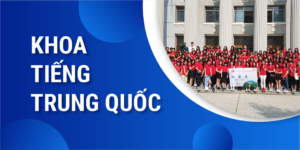- Câu hỏi 113842:
Read the text and decide that the statement is True (T), False (F) or Not Given (NG).
The lake was shallow, and during the nearly 200 years until 1519, the Aztecs expanded the inhabited area by land refill and the creation of artificial islands. Canals were dug for the transportation of goods and people. Aqueducts were constructed to bring drinking water from natural springs outside the city, dams to protect it against floods, and causeways and bridges to connect the city with the shore. There were many houses, palaces, temples, squares, markets and even a zoo. Perhaps the most striking construction of this period is the Templo Mayor, a double pyramid which still survives. As the capital of an empire stretching from Texas to Honduras, Tenochtitlan was a magnificent and important city. When the Spanish arrived, they called it the 'Venice of the New World'.
The Spanish began their conquest of Mexico in 1519 and came close to Tenochtitlan the same year. In 1521, they took control of it, after fierce fighting that destroyed most of the city. A new capital, with a new name, was built on the ruins, using Spanish architectural styles. One part of the lake was filled in to join the island to the shore, and Mexico City became the capital of the wealthiest colony in the Americas, the centre of trade between Spain and China.
The Aztec inhabitants of Tenochtitlan left when the city was conquered
- Câu hỏi 113847:
Read the text and choose the best answer.
One of the most renowned Spanish architects of all time was Antoni Gaudi. Gaudi's emergence as one of 's preeminent artists at the end of the nineteenth century marked a milestone in the art world.
Gaudi's popularity helped to bring about the acceptance and rebirth of the Catalan language, which had been banned during the literature and art. Gaudi shares his Catalonian background with two other famous Spanish artists, Pablo Picasso and Miro. The diverse ethnic background of the region greatly influenced the work of Picasso and Miro, as well as Gaudi. Thus, their works were a combination of an old history and an active, vivid imaginary world. This has sometimes been referred to as the “Catalan Mind.” Yet it was perhaps Gaudi who had the greatest talent for bringing together diverse groups, ones which others viewed as being too diametrically opposed to be capable of coming together and co-existing amicably.
This was apparent not only in the artists and other individuals who surrounded him, but also in the varied styles and techniques he employed in his architecture. Much of his work can be seen in , where his structures are known as a fine representation of modernism. He also used a great variety of color in his buildings, and this art nouveau is often associated with his own unique style of design. All of these factors are what helped put him at the forefront of art movements to come: his unique ability to take on and transform traditional Spanish elements with the emerging diverse ethnic groups, merging these with his own fertile imagination, and consequently turning these forces into some of the greatest architecture the world has ever seen.
Which city is primarily associated with Gaudi today?
- Câu hỏi 113852:
Read the text and choose the best answer.
A monarchy is a form of government where a single ruler is the head of state. It is one of the oldest forms of government in the world. Monarchs are usually kings or queens. But they can also be a chief, an emperor, or called by another name. In some countries, such as , the monarch is merely symbolic. They are figureheads with no real power. In other countries, the monarch wields considerable power. There are currently 29 sovereign monarchies around the world.
The word considerable is closet in meaning to
- Câu hỏi 113855:
Read the text and choose the best answer.
Many factors influenced emerging modes of production. For example, machine tools, the tools used to make goods, were steadily improved in the latter part of the nineteenth century-always with an eye to speedier production and lower unit costs. The products of the factories were rapidly absorbed by the growing cities that sheltered the workers and the distributors. The increased urban population was nourished by the increased farm production that, in turn, was made more productive by the use of the new farm machinery. American agricultural production kept up with the urban demand and still had surpluses for sale to the industrial centers of .
The labor that ran the factories and built the railways was recruited in part from American farm areas where people were being displaced by farm machinery, in part from Asia, and in part from . now began to send tides of immigrants from eastern and southern Europe-most of whom were originally poor farmers but who settled in American industrial cities. The money to finance this tremendous expansion of the American economy still came from European financiers for the most part, but the Americans were approaching the day when their expansion could be financed in their own "money market."
Which of the following is NOT true of United States farmers in the nineteenth century?
- Câu hỏi 113860:
Read the text and decide that the statement is TRUE (T), FALSE (F) or NOT GIVEN (NG).
The first two decades of this century were dominated by the microbe hunters. These hunters had tracked down one after another of the microbes responsible for the most dreaded scourges of many centuries: tuberculosis, cholera, diphtheria. But there remained some terrible diseases for which no microbe could be incriminated: scurvy, pellagra, rickets, beriberi. Then it was discovered that these diseases were caused by the lack of vitamins, a trace substance in the diet. The diseases could be prevented or cured by consuming foods that contained the vitamins. And so in the decades of the 1920's and 1930's, nutrition became a science and the vitamin hunters replaced the microbe hunters.
Nutrition has been considered a key factor in finding treatment to many diseases.
- Câu hỏi 113863:
Read the text and Decide that the following statements are TRUE (T), FALSE (F) or NOT GIVEN (NG).
Almost everyone with or without a computer is aware of the latest technological revolution destined to change forever the way in which humans communicate, namely, the Information Superhighway, best exemplified by the ubiquitous Internet. Already, millions of people around the world are linked by computer simply by having a modem and an address on the 'Net', in much the same way that owning a telephone links us to almost anyone who pays a phone bill. In fact, since the computer connections are made via the phone line, the Internet can be envisaged as a network of visual telephone links. It remains to be seen in which direction the Information Superhighway is headed, but many believe it is the educational hope of the future.
Using the Internet costs the owner of a telephone extra money.
- Câu hỏi 113869:
Read the text and choose the best answer.
Almost everyone with or without a computer is aware of the latest technological revolution destined to change forever the way in which humans communicate, namely, the Information Superhighway, best exemplified by the ubiquitous Internet. Already, millions of people around the world are linked by computer simply by having a modem and an address on the 'Net', in much the same way that owning a telephone links us to almost anyone who pays a phone bill. In fact, since the computer connections are made via the phone line, the Internet can be envisaged as a network of visual telephone links. It remains to be seen in which direction the Information Superhighway is headed, but many believe it is the educational hope of the future.
The World Wide Web, an enormous collection of Internet addresses or sites, all of which can be accessed for information, has been mainly responsible for the increase in interest in the Internet in the 1990s. Before the World Wide Web, the 'Net' was comparable to an integrated collection of computerised typewriters, but the introduction of the 'Web' in 1990 allowed not only text links to be made but also graphs, images and even video. A Web site consists of a 'home page', the first screen of a particular site on the computer to which you are connected, from where access can be had to other subject related 'pages' at the site and to thousands of other computers all over the world. This is achieved by a process called 'hypertext'. By clicking with a mouse device on various parts of the screen, a person connected to the 'Net' can go travelling, or 'surfing' through a web of pages to locate whatever information is required.
Anyone can set up a site; promoting your club, your institution, your company's products or simply yourself, is what the Web and the Internet is all about. And what is more, information on the Internet is not owned or controlled by anyone organisation. It is, perhaps, true to say that no-one and therefore everyone owns the 'Net'. Because of the relative freedom of access to information, the Internet has often been criticised by the media as a potentially hazardous tool in the hands of young computer users. This perception has proved to be largely false however, and the vast majority of users both young and old get connected with the Internet for the dual purposes for which it was intended – discovery and delight.
What would the next paragraph to follow the passage probably be about?
- Câu hỏi 113870:
Read the text and choose the best answer.
In the mid-nineteenth century, the United States had tremendous natural resources that could be exploited in order to develop heavy industry. Most of the raw materials that are valuable in the manufacture of machinery, transportation facilities, and consumer goods lay ready to be worked into wealth. Iron, coal, and oil-the basic ingredients of industrial growth - were plentiful and needed only the application of technical expertise, organizational skill, and labor.
One crucial development in this movement toward industrialization was the growth of the railroads. The railway network expanded rapidly until the railroad map of the United States looked like a spider's web, with the steel filaments connecting all important sources of raw materials, their places of manufacture, and their centers of distribution. The railroads contributed to the industrial growth not only by connecting these major centers, but also by themselves consuming enormous amounts of fuel, iron, and coal.
Many factors influenced emerging modes of production. For example, machine tools, the tools used to make goods, were steadily improved in the latter part of the nineteenth century-always with an eye to speedier production and lower unit costs. The products of the factories were rapidly absorbed by the growing cities that sheltered the workers and the distributors. The increased urban population was nourished by the increased farm production that, in turn, was made more productive by the use of the new farm machinery. American agricultural production kept up with the urban demand and still had surpluses for sale to the industrial centers of Europe.
The labor that ran the factories and built the railways was recruited in part from American farm areas where people were being displaced by farm machinery, in part from Asia, and in part from Europe. Europe now began to send tides of immigrants from eastern and southern Europe-most of whom were originally poor farmers but who settled in American industrial cities. The money to finance this tremendous expansion of the American economy still came from European financiers for the most part, but the Americans were approaching the day when their expansion could be financed in their own "money market."
According to the passage, all of the following were true of railroads in the United States in the nineteenth century EXCEPT that
- Câu hỏi 113882:
Read the text and answer the question.
An example of a bizarre occurrence regarding a species of frog dates from the summer of 1995, when 'an explosion' of multi-coloured frogs of the species Rana klepton esculenta occurred in the Netherlands. Normally these frogs are brown and greenish-brown, but some unknown contributory factor is turning these frogs yellow and/or orange. Nonetheless, so far, the unusual bi- and even tri-coloured frogs are functioning similarly to their normal-skinned contemporaries. It is thought that frogs with lighter coloured skins might be more likely to survive in an increasingly warm climate due to global warming.
What is best heading for the paragraph?
- Câu hỏi 113886:
Read the text and choose the best answer.
Western people rely on technical and mechanical solutions in everything they do. Refrigerators preserve their food, washing machines clean their underwear and computers are supposed to solve all their problems. When they are ill, they rely on the surgeon’s knife. If their hearts are running down, then they must be repaired, if they cannot be repaired, they should be replaced, just as an old car sometimes gets a new engine. But up to now we have had a shortage of donors to give their hearts, to keep one person alive, another donor had to die.
Nowadays there is more and more talk about using monkeys. Every monkey has a near-human heart, and humans have always been over careful in respecting the lives and well-being of other animals. This includes the life and well-being of other humans. Therefore, in the early years of the 22nd century - It was told the mass killings of monkeys may occur. We’ll need to use their hearts for human consumption.
Monkeys, on the whole, are happier creatures than their near relatives, Homo sapiens, or man. They know fear, of course, and they face real dangers, but they are also more intelligent than us. They create no unnecessary dangers for themselves, they run no businesses, chase no money, are unimpressed by gold – that utterly useless metal, and they do not care at all about hell or evil spirits. I have a vague feeling that it is not monkeys’ hearts that we ought to implant in ourselves, but monkeys’ brains.
According to the author, westerners believe heath problems can be solved by…

















